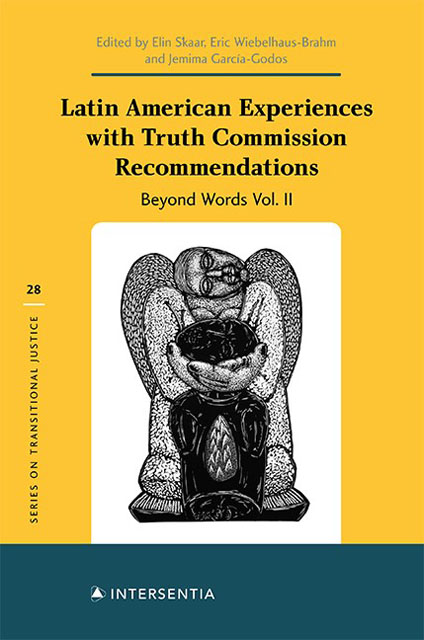Panama’s Truth Commission Recommendations: Out of Sight, Out of Mind?
Published online by Cambridge University Press: 19 November 2022
Summary
INTRODUCTION
The Panamanian Truth Commission (PTC) was created by President Mireya Moscoso via Executive Decree No. 2 on January 18, 2001. The decree charged the PTC with contributing to the “clarification of the truth about the violations of the human rights fundamental to life, including enforced disappearance, carried out during the military regime” that governed Panama between 1968 and 1989. The PTC also was tasked with making “recommendations for legal and administrative measures that to their judgement can be adopted to hinder or prevent the [recurrence of similar] events.” This feature implies that the very architects of the PTC hoped this body would have an impact beyond the report it produced. This chapter follows the implementation of these recommendations so as to better understand the effects of truth commissions. This is especially critical in the case of Panama, where, besides a follow-up body established in 2003, the PTC has been the only transitional justice mechanism adopted to date.
The chapter finds that the majority of the final report's 11 recommendations have seen limited implementation. The underlying reason, it is argued, is the fact that the creation of the PTC was not part of a sweeping social and political commitment to censure the human rights violations of the military regime. Rather, it was an isolated policy that sought to get the Moscoso administration out of a bind. Therefore, once President Martín Torrijos, leader of the political party created by the military regime to safeguard its legacy, took office in September 2004, implementation was side-lined, at best, and dismantled, at worst. Where some strides towards implementation were made, they were the result of the right civil servant at the right place, acting with the support of the Inter-American Court for Human Rights (IACtHR) and Inter-American Commission on Human Rights (CIDH). At present, the PTC report is regarded as little more than an important historic document, which broaches a topic that many would have preferred to avoid.
The record of implementation was reconstructed through a combination of documentary evidence – that is mainly newspapers, (international) nongovernmental organisations’ reports, and reports from local authorities – as well as more than a dozen semi-structured interviews and countless informal conversations with victims, human rights activists, commissioners, and government officials. fieldwork in Panama was undertaken between March and June 2011 and in October 2016 to guarantee accurate data was collected on each of the recommendations.
- Type
- Chapter
- Information
- Latin American Experiences with Truth Commission Recommendations: Beyond Words Vol. II , pp. 451 - 484Publisher: IntersentiaPrint publication year: 2022

